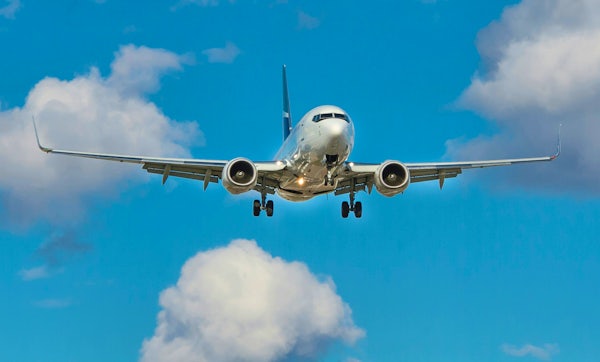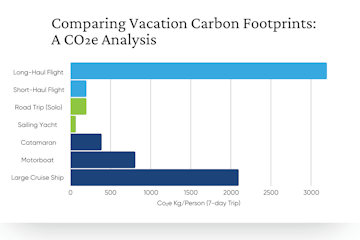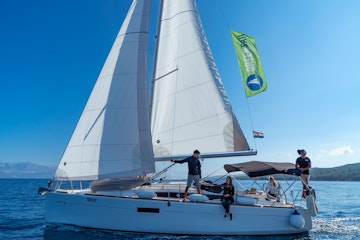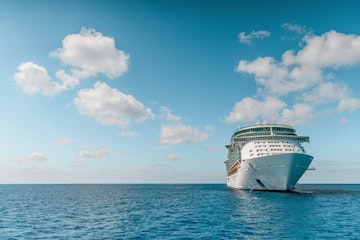Blogs 
5 minute read
Last updated
22nd May 2025
Which Holidays Have the Highest Carbon Footprint? A CO₂e Comparison

As global awareness of environmentalism grows, the way we travel will come under greater scrutiny. At Green Sail, we equip our verified charter partners with the tools and insights they need to measure their carbon emissions and develop a clear sustainability roadmap via the Green Sail Footprint system.
We believe that everyone should be empowered with data to make informed decisions. But understanding CO₂e (carbon dioxide equivalent) emissions can feel abstract. Therefore, in this blog post, we break down the emissions associated with different types of holidays, putting them into context to help travellers and operators see the real-world impact of our travel choices.

Flying Long-Haul: The Biggest Carbon Hit
A return flight from London to Bangkok generates roughly 3,200 kg of CO₂e per passenger. That’s more than the average person in many developing countries emits in an entire year. Add in high-emission hotel stays, and the number climbs even higher.
Better option: Consider offsetting flights or replacing a far-flung trip with a closer destination every other year.

European City Breaks: The Train vs Plane Debate
A weekend flight from London to Paris might emit around 150 - 200 kg CO₂e per passenger, while the same journey by Eurostar train is closer to 6 kg. Train holidays can cut emissions by over 90% compared to flying - and they’re often less hassle too.
Better option: Choose trains over planes where possible

Road Trips: Fuel Matters
The type of fuel you use on a road trip can greatly impact your carbon footprint. Traditional petrol and diesel cars emit around 150 - 200 g CO₂e per km, while electric vehicles (EVs) powered by renewable energy drop that to just 10 - 30 g/km.
For example, a 1,000 km road trip in a petrol car generates about 200 kg CO₂e. Shared between four people, that's 50 kg per person, much lower than flying, where a round-trip flight from London to Paris can emit 150 - 200 kg CO₂e per passenger.

Charter Boats: Cleaner Than You Think
At sea, the type of vessel makes a significant difference in your holiday’s carbon footprint - and sailing is one of the lowest-impact options available.
According to Green Sail Footprint data collected from charter boats operating in select Dalmatian counties in Croatia, emissions vary based on propulsion method and vessel type:
- Sailboat: A sailboat emits approximately 504 kg of CO₂e per vessel per week, translating to about 68 kg CO₂e per person. This minimal footprint is largely attributed to the use of wind power, with auxiliary engines contributing to a small portion of emissions.
- Catamaran: A typical catamaran emits around 1,540 kg CO₂e per week, or 391 kg CO₂e per person. Though more carbon-intensive than sailboats due to their size and auxiliary power needs, they still offer a better footprint than many land-based or cruise options.
- Motorboat: Motor yachts are the most emissions-heavy, producing around 4,307 kg CO₂e per vessel per week, which works out to 810 kg CO₂e per person. This is due to larger engine sizes that burn more fuel to achieve higher speeds. These high emissions underscore the importance of vessel choice and the growing need for cleaner technologies in this segment.
Sailing yachts stand out as a sustainable option by harnessing wind and minimising fuel usage. Many charter companies are investing in renewable energy sources, waste reduction, and eco-provisioning. Through our Green Sail Footprint program, our verified partners have been able to reduce and measure these changes on a robust roadmap to sustainability.
Better option: Support charter companies that are putting provisions in place to measure and reduce their CO₂e

Cruises: A Hidden Carbon Giant
Despite their popularity, large cruise ships are among the most carbon-intensive ways to holiday. On average, a single passenger emits 250 to 300 kg CO₂e per day, significantly more than the 50–100 kg CO₂e per day typical of a hotel-based holiday (Travel and Climate, n.d.). With some vessels carrying more than 5,000 passengers, total emissions can exceed 10,000 tonnes of CO₂e in just one week (Friends of the Earth, 2024). This works out to approximately 2,100 Kg CO₂e per week, per person.
Better option: Small ship cruising
Every trip we take has an impact, but with better data, we can make better choices. By choosing lower-emission transport and supporting holiday providers who track their footprint, we can all help protect the places we love to visit.
At Green Sail, we’re working with charter companies to make carbon accountability the new norm in leisure travel. If your company is ready to take the next step, discover more about our Green Sail Footprint system.
